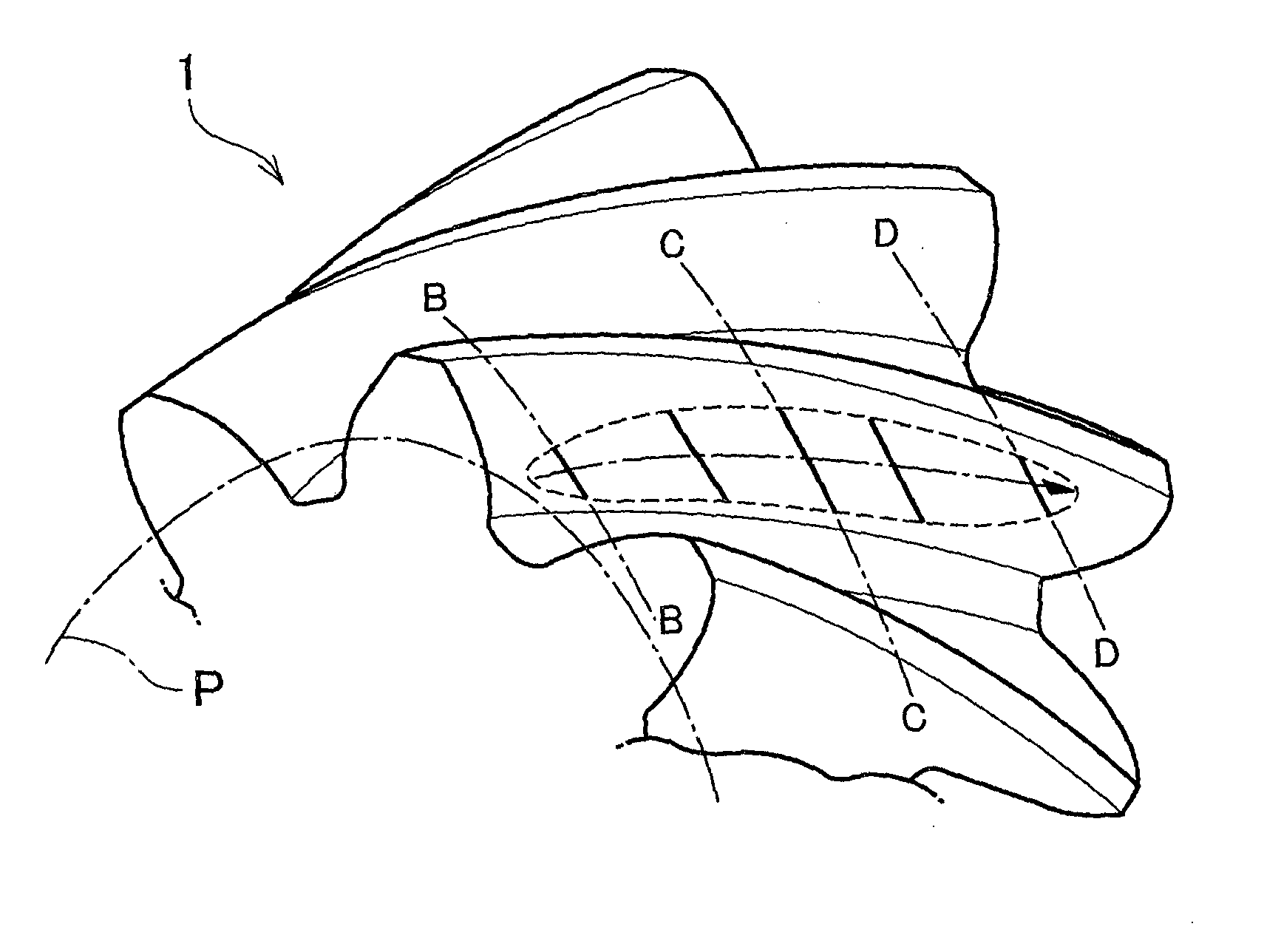Gear mechanism and manufacturing method of gear mechanism
a gear mechanism and manufacturing method technology, applied in the field of gear mechanism, can solve the problems of power loss or vibration and noise due to slippage or contact between the teeth inevitably ending up, reducing power transfer efficiency or damage to the tooth face, and reducing the contact position of the tooth face, so as to reduce the hertzian stress that acts on the tooth face, the effect of suppressing or preventing the increase of friction loss
- Summary
- Abstract
- Description
- Claims
- Application Information
AI Technical Summary
Benefits of technology
Problems solved by technology
Method used
Image
Examples
Embodiment Construction
[0040]First, the basic structure of a gear to which the gear mechanism according to an embodiment of the invention may be applied will be briefly described with reference to FIGS. 5 and 6. The gear mechanism according to an embodiment of the invention may be applied to a gear 1 such as a helical gear or double helical gear or a worm gear shown in FIG. 5, in which a line of intersection of a tooth face 2 and a pitch surface 3 of the gear 1, i.e., a tooth trace 4, is twisted (i.e., skewed) at a predetermined angle (hereinafter, referred to as “twist angle θ”) with respect to an axial direction. That is, the gear mechanism of the invention may be applied to a gear in which the teeth are formed continuously twisted in the circumferential direction along a central axis s. The pitch surface 3 is a cylindrical surface where gears that transmit power contact each other as they rotate. Therefore, when the position where the gears contact each other is on the pitch surface 3, slippage does no...
PUM
| Property | Measurement | Unit |
|---|---|---|
| curvature radius | aaaaa | aaaaa |
| relative curvature radius | aaaaa | aaaaa |
| friction coefficient | aaaaa | aaaaa |
Abstract
Description
Claims
Application Information
 Login to View More
Login to View More - R&D
- Intellectual Property
- Life Sciences
- Materials
- Tech Scout
- Unparalleled Data Quality
- Higher Quality Content
- 60% Fewer Hallucinations
Browse by: Latest US Patents, China's latest patents, Technical Efficacy Thesaurus, Application Domain, Technology Topic, Popular Technical Reports.
© 2025 PatSnap. All rights reserved.Legal|Privacy policy|Modern Slavery Act Transparency Statement|Sitemap|About US| Contact US: help@patsnap.com



